Explore the Best AI Image Gallery

Wearable Tech Innovations: Shaping the Future of Creativity and Beyond
In recent years, wearable technology has transitioned from novelty items to indispensable tools that enhance everyday life, and the creative industry is no exception. The potential applications of wearable tech in areas like art, design, and performance are vast and varied, painting a picture of a future where creativity intertwines seamlessly with technology.
The Intersection of Wearable Tech and Creativity
Wearable technology encompasses a broad spectrum of devices, including smartwatches, fitness trackers, augmented reality (AR) glasses, and even smart clothing. In artistic domains, these devices can lead to groundbreaking innovations. For instance, artists can use smartglasses to visualize their works in augmented reality, providing a unique experience that blends physical and virtual art. This melding of realities enables immersive installations, interactive performances, and dynamic user engagement.
Similarly, wearable tech can be utilized in performance art. Dancers and performers are now integrating sensors that respond to their movements. These sensors can trigger visual effects, sound changes, and lighting adjustments, bringing a fresh layer of interaction between the performer and the audience. The result is a multisensory experience that engages viewers on multiple levels, thus expanding the boundaries of artistic expression.
Potential Uses of Wearable Technologies
- Art Creation: Artists can employ wearables to capture data that influences their artwork. For example, a painter could wear a device that tracks their heart rate and translates it into colors or brush strokes on canvas.
- Design and Fashion: Smart clothing that detects body temperature or movement can adapt to provide comfort, thereby reshaping fashion design paradigms. Designers are beginning to explore clothing that changes color or pattern based on the wearer's environment or mood.
- Health and Well-being: Musicians are utilizing wearable tech to monitor their physical conditions while performing, ensuring optimal health and performance levels. This introduces a new layer of self-awareness and preventive care within performing arts.
Ethical Considerations
With great technological power comes the responsibility to consider ethical implications. The use of wearable devices blurs the lines between privacy and creativity. Capturing real-time data and altering it to reflect performance raises questions about consent and ownership. Who owns the data collected by these wearables: the artist, the audience, or the tech companies manufacturing the devices?
Furthermore, as technology becomes more integrated into artistic practices, there is a risk of over-reliance on gadgets, potentially stifling the organic, intuitive processes that define creativity. Artists must navigate the fine line between leveraging technology to enhance their work and preserving the fundamental essence of human creativity.
Future Trends
The future of wearable technology in the creative sector appears promising, driven by continuous innovation. Some emerging trends to watch include:
- Increased personalization: Future wearables will likely offer more tailored experiences, learning from users' preferences to create customized artistic tools. Imagine an AR headset that not only contextualizes art but also adapts its presentation based on the observer's interests.
- AI Integration: As artificial intelligence continues to evolve, we can anticipate smarter wearables capable of understanding human emotions and creative intent. This integration could lead to real-time, adaptive interactions that enhance artistic output.
- Collaboration with VR/AR: The fusion of wearable tech with virtual and augmented reality will likely transform performance art, allowing new forms of expression and interaction.
As wearable technology continues to evolve, it opens up thrilling new avenues for creativity, collaboration, and expression that were previously unimaginable. Artists and creators who embrace these innovations will shape the creative landscape of tomorrow with an artwork that integrates technology in ways that enhance human experience and connection. Navigating the accompanying ethical considerations will be crucial in ensuring these advancements enrich, rather than diminish, the essence of creativity.

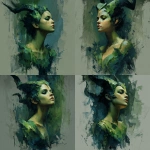

](https://images.ai-img.art/thumbnails/150/397ac87ed3d0c2048e225cfd489734182f0b8bee3cffc27ec5674b8914a33a0c.webp)






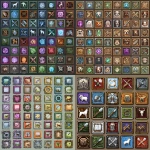


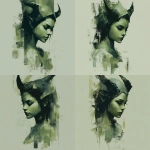

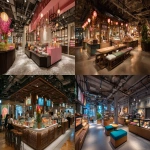



](https://images.ai-img.art/thumbnails/150/8f9a6a4ab5c92bc2352e685760875ca963cc75a1d2eb194d0747fc183b7ae7f7.webp)








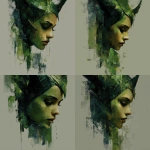
](https://images.ai-img.art/thumbnails/150/26f0974c90f10e5c40e463cbe8372a360bb4b83d258fb20c6ec6c6b28cce8a55.webp)
](https://images.ai-img.art/thumbnails/150/c0a2543716dbdae32453ebd12611077a13be65cf1399789bb13ed420a9dc84a8.webp)




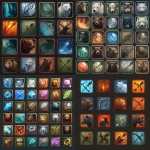


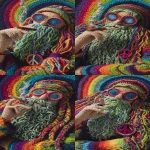
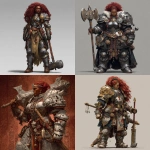

](https://images.ai-img.art/thumbnails/150/a8fad3d84b9625ec7889a602b6264e356513832fe074e590d2dddc54f7d58915.webp)
